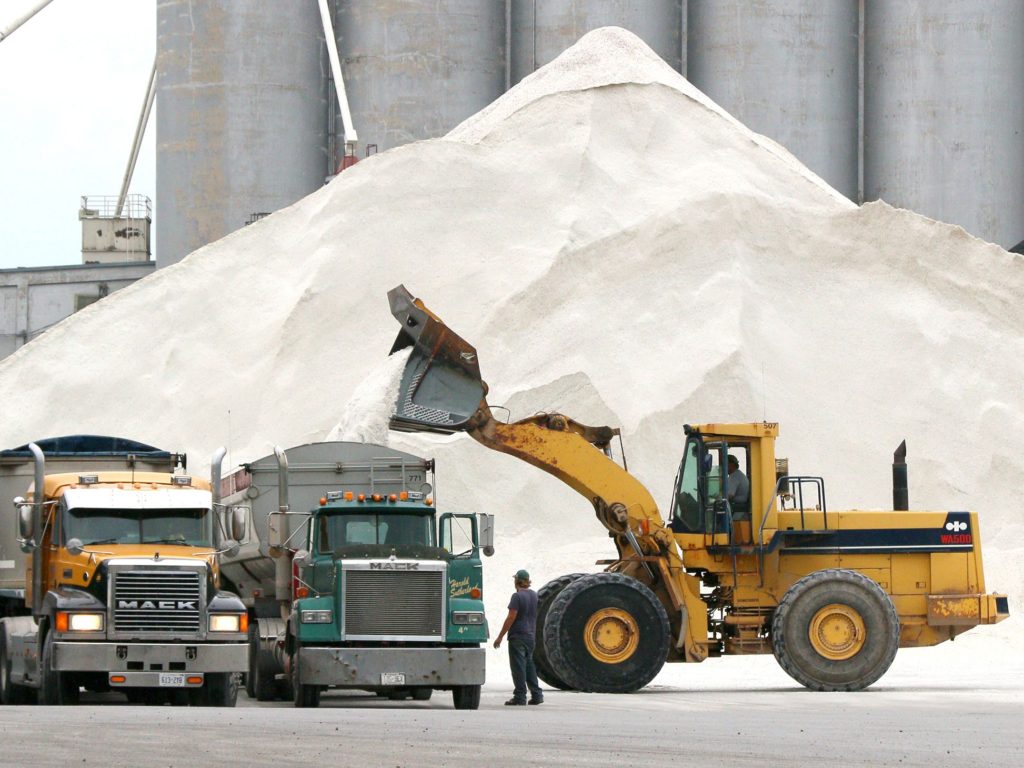“…he took the city, and slew the people that was therein, and beat down the city, and sowed it with salt ” – Judges 9:45
This episode begins a new arc on how sediment archives are being used to study current environmental issues. As we are deep into winter in the northern hemisphere and road salt is currently being spread liberally to roadways and sidewalks across Canada (and elsewhere), it seems an appropriate time to discuss the impact of de-icing roads on freshwater systems.
For those unfamiliar with road salt (perhaps due to living in a warmer climate), sodium chloride is applied to roads during winter as a public safety measure. The salt lowers the freezing point of water, reducing ice formation on the roads. This approach is effective until temperatures fall below -10 °C, at which point sand is commonly used to improve traction for drivers instead.
The history of road salt is almost as old as the mass production of cars, with the first recorded use in 1938 in New Hampshire, USA. Over the past ~80 years the amount of salt used has increased significantly, estimated at ~20M tonnes/year in the US, and ~5-10M tonnes/year in Canada. These massive quantities of salt are largely mined from extensive underground deposits, with the world’s largest salt mine located in Goderich, Ontario, extending far underneath Lake Huron.

At first glance, it may not be clear why improving winter driving safety is a pressing environmental issue. However, sodium chloride is not typically available in terrestrial systems at the concentrations created through road salt application (apparent in how Moose will use cars as salt licks). Unfortunately, the salt does not stay on the roads, and eventually enters streams, rivers and lakes. Large salt inputs have profound impacts on the ionic concentration of downstream water bodies, with dire consequences for aquatic life well adapted to freshwater conditions.
Public interest in the effects of road salt seemed to explode into the public consciousness in 2017 with the PNAS article ”Salting our freshwater lakes” by Dugan et al. Lots of media attention introduced the public to a ‘new’ environmental concern that was both severe and relatable.
Paleolimnology can provide valuable data about the impacts of road salt, as sediment archives are excellent for identifying baseline conditions and tracking long-term changes. Questions related to the the onset and intensity of salt-related changes are highly site specific, and a variety of indicators (from multiple trophic levels) have already answered questions related to the effect of long-term leakage from a salt storage facility on downstream chrysophyte communities, or how cladoceran communities respond to nearby salting activities. Increased salt concentrations are also changing physical processes through the formation of dense salty layers of water at the bottom of affected lakes that impede lake mixing, that in turn can reduce fish habitat, or release phosphorus bound up in lake sediments. There is a lot more to learn about how road salt is transforming lakes and ponds.

So why is so much road salt applied, when it would be cheaper and better for the environment to use less? Simply put, it’s a case of the precautionary principle applied to human life over environmental damage. However, given the attention in recent years, there is now lots of interest in improving application practices and less harmful alternatives to sodium chloride (including beet juice, cheese brine, chicken grit, and pickle juice). There is no doubt this will be an interesting topic of research for quite some time.

